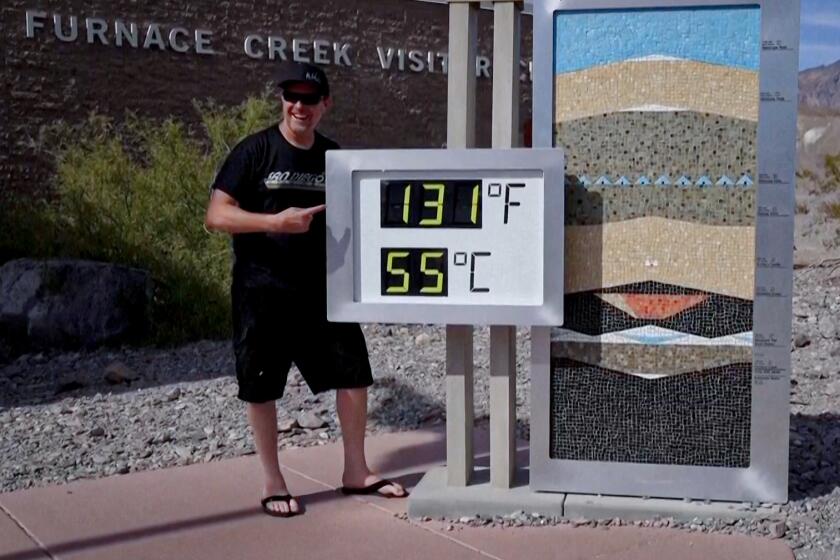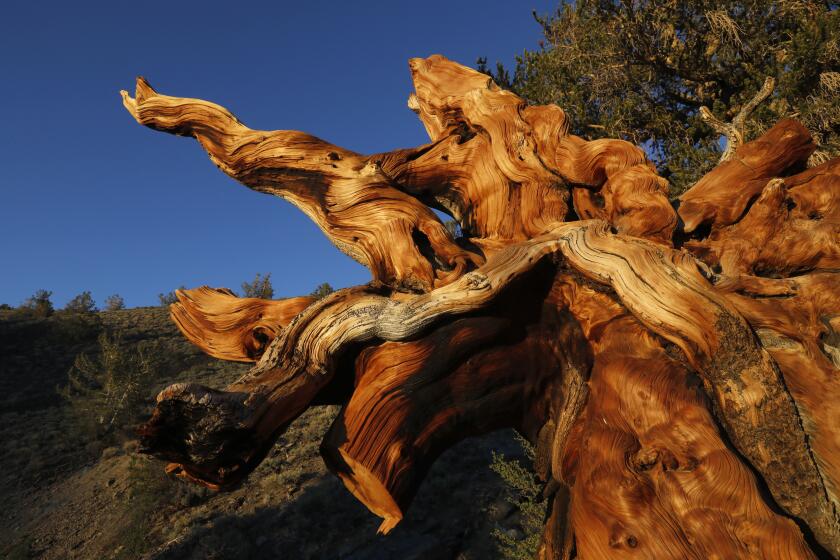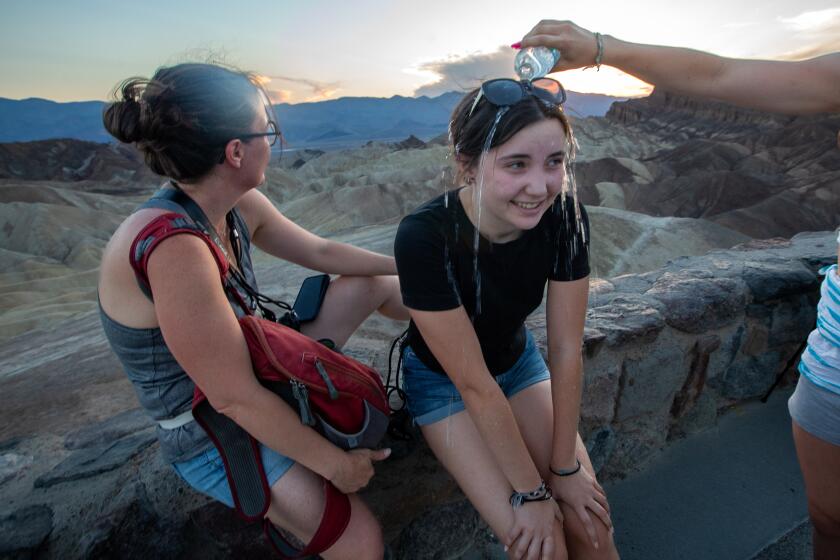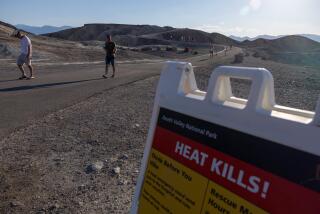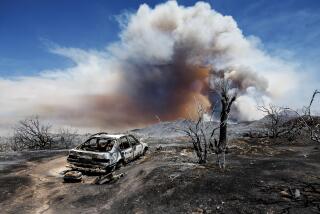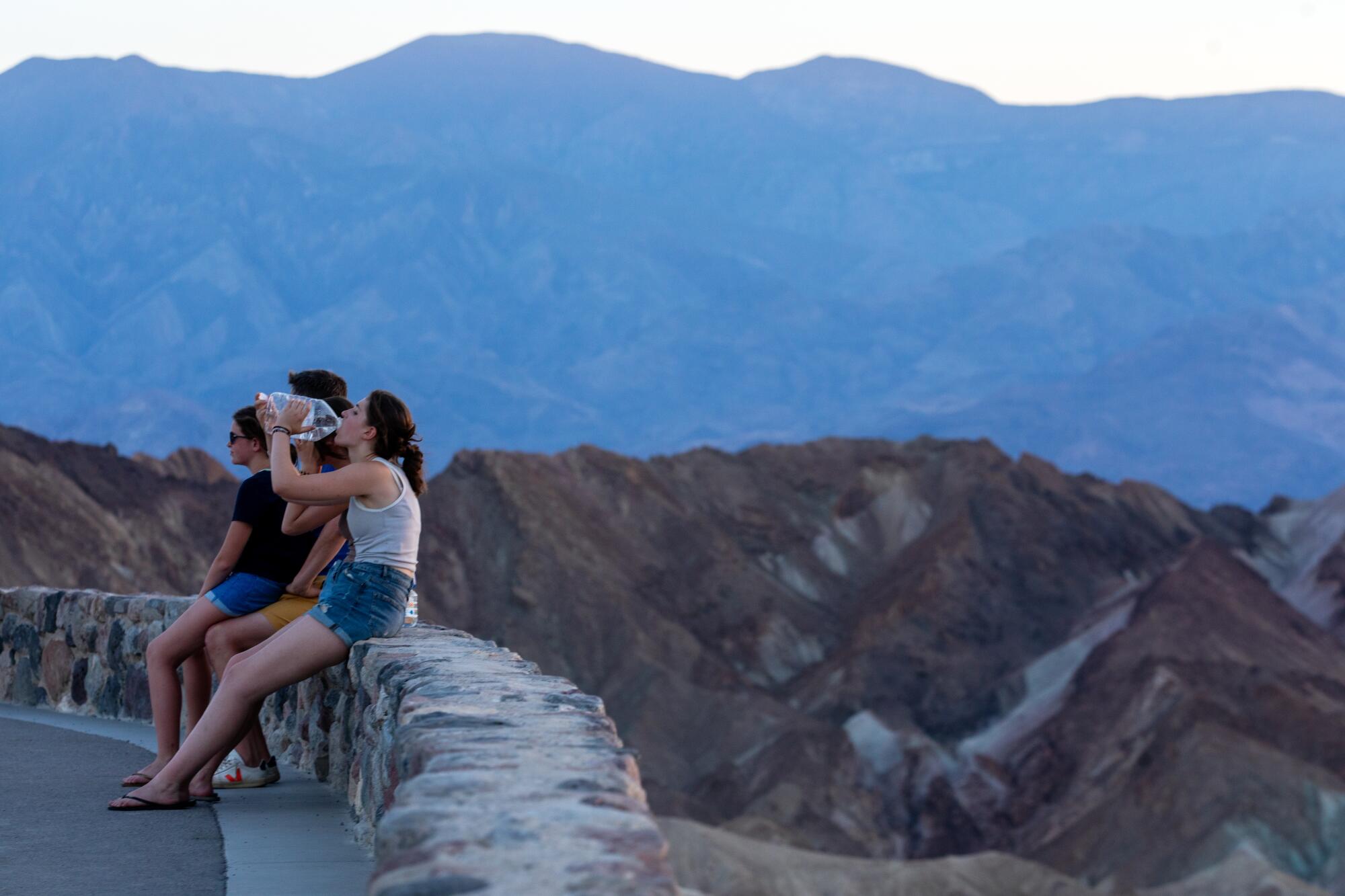
FURNACE CREEK, Calif. â It was 10 p.m. and 116 degrees as a brutal wind whipped through the darkness.
Here in Death Valley National Park â dubbed the hottest place on Earth â intrepid tourists waded into a hotel swimming pool seeking what little relief they could find.
Park temperatures had soared to 126 degrees that afternoon, just a few degrees shy of the daily record.
âI never knew such temperatures before,â said Nicolas Combaret, 40, who was visiting Death Valley from France with his wife and 5-year-old son. It was one of several stops on their tour of the Southwest.
âWhen we saw on the news that the temperature would be 125, 126, we thought, âWow, thatâs impressive â it will be a good experience to live that, to feel the hottest ever here.ââ
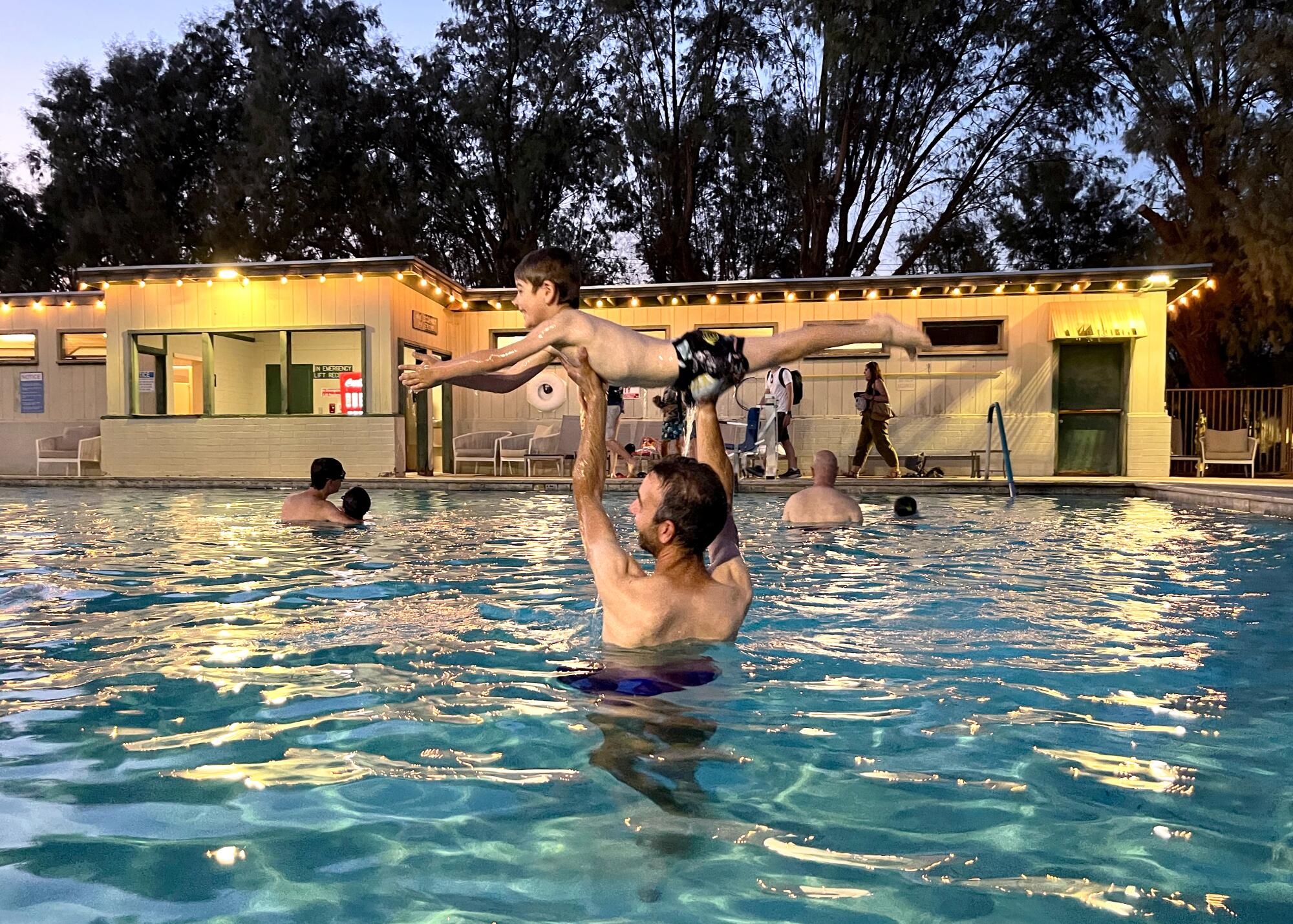
That the summertime heat can elicit comparisons to what life might feel like on the surface of the sun is nothing new.
Much of the reason for this is that Death Valley is a long, narrow basin that sinks 282 feet below sea level. The sun-bleached moonscape near the border of Nevada is hemmed in by jagged, rust-colored mountains, which trap hot air and circulate it like a convection oven.
But even Death Valley â one of the most extreme places on the planet â is not immune to climate change. This past week, many tuned in to see if its all-time temperature record of 134 degrees would be broken, a possibility that was heralded by some as a barometer of climate change.
Though the park fell short of that record, many who know Death Valley best say theyâre already seeing the impacts of climate change on a near-daily basis.
âAs the climate changes, as world temperatures get hotter, Death Valley will get hotter,â said Giovanna Ponce, a public information officer with the park. She noted that seven of Death Valleyâs hottest summers on record occurred in the past 10 years.
The hot days are also getting more frequent. The year 2020 holds the parkâs record for the most days over 100 degrees â 169 days â according to data from the National Weather Service. The year 2021 broke the record for the most days over 125 degrees â 11.
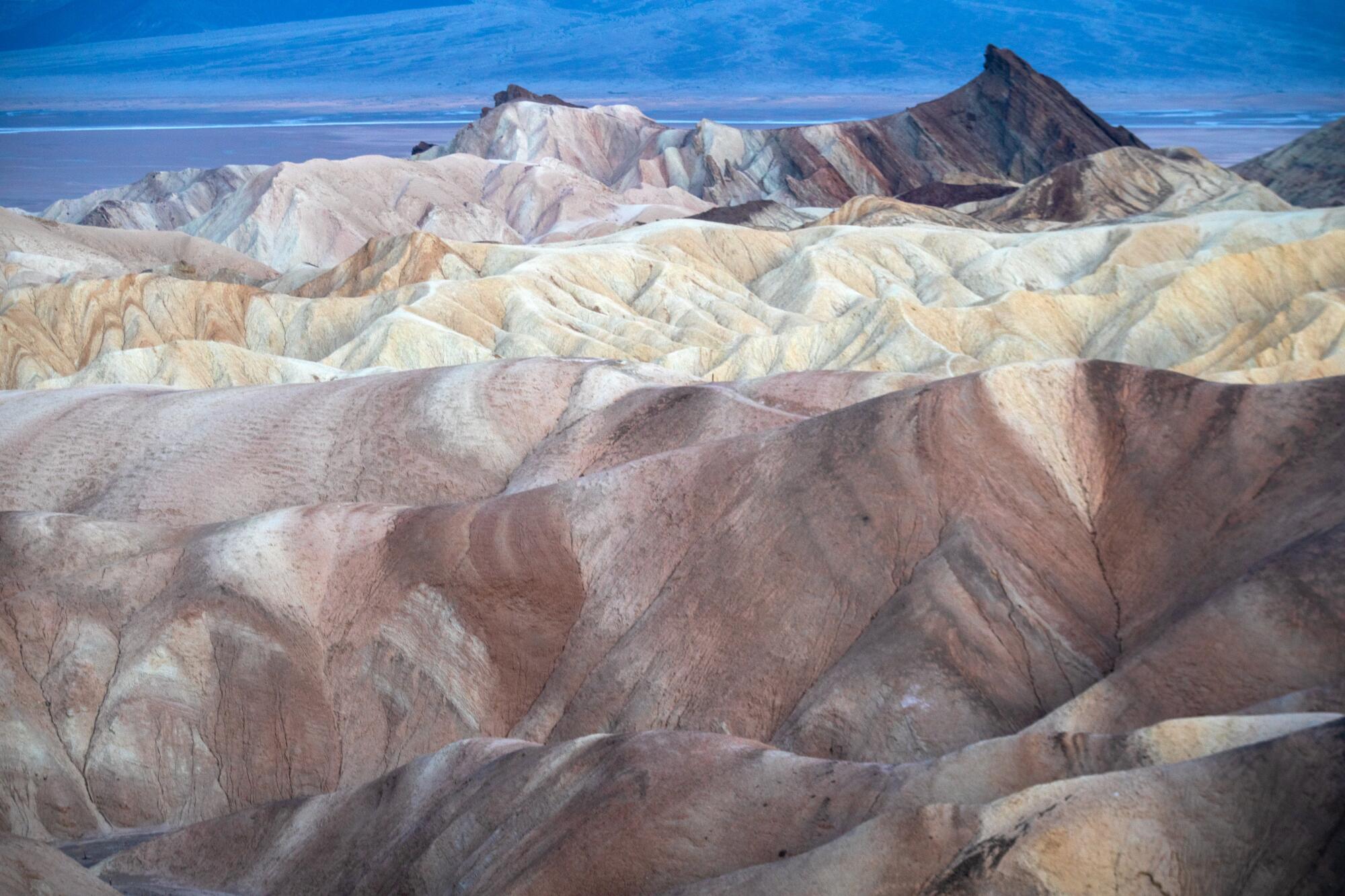
Tourists head to Death Valley to experience the scorching heat. (Video by Francine Orr).
If temperatures keep rising, there will be cascading impacts, including threats to birds, fish and ancient trees, officials said. Groundwater depletion and extreme precipitation are also accelerating, with last August seeing the rainiest day in Death Valleyâs history, 1.7 inches, which triggered flash floods that scoured the landscape and damaged roads.
âBecause the place is extreme, everything then is adapted and specialized for desert survival,â said Nichole Andler, a park ranger. âAnd when the extreme gets more extreme, it leads to struggle.â
Death Valley temperatures soared to 128 degrees Sunday, breaking the daily record of 127 degrees set in 2005 and 1972. It was expected to hit 125 on Monday.
In that way, the park has always been a place of extremes. But no place is immune to human-caused climate change, which is driving up global temperatures, warming oceans and shrinking ice sheets. This June was the Earthâs hottest June on record, according to the National Oceanic and Atmospheric Administration, and the next five years are expected to be the hottest ever recorded.
In Death Valley, one of the places feeling the change most acutely is Telescope Peak, the highest point in the park that is home to its population of ancient bristlecone pine trees. The treesâ mortality rate has increased about 70% in the last decade due to severe drought and bark beetle infestations, Ponce said.
âThose are some of the oldest trees on the planet, and previously thought to be very resistant,â she said.
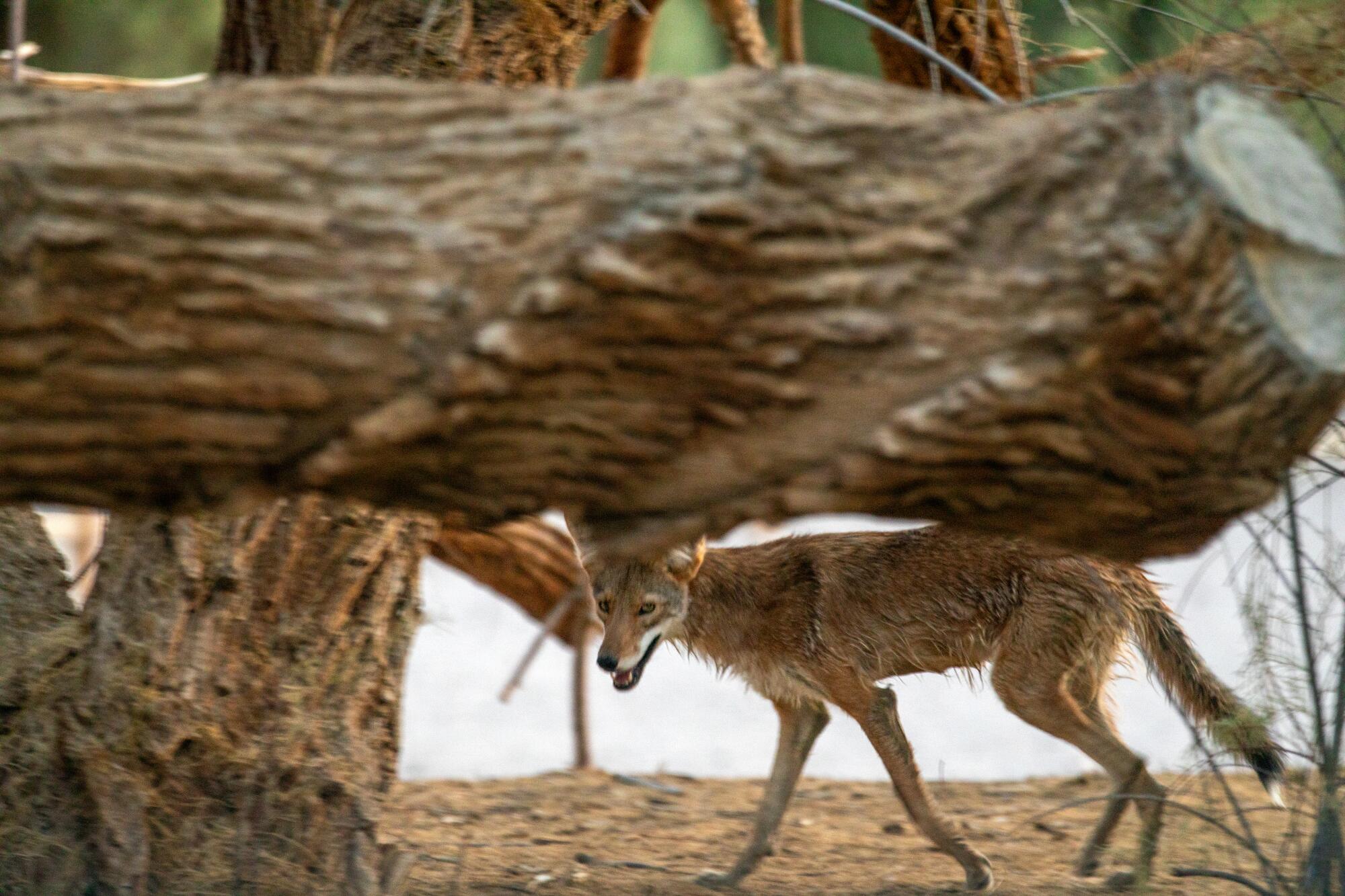
One 2022 study found that thousands of the trees have been killed at Telescope Peak since 2013, including some as old as 1,612 years. Their deaths indicate that even older bristlecone pines in the White Mountains, Great Basin National Park and elsewhere could be at risk, the study said.
Another study from 2019 found that about a third of Death Valleyâs bird species have declined in the last 100 years due to heat stress associated with climate change; and yet another, from 2018, concluded that the biggest declines of Mojave bird populations are occurring in Death Valley.
But the parkâs scalding temperatures havenât been enough to keep heat-seekers from trekking to the area to experience Mother Natureâs worst.
âItâs like hell,â said Robert Szulc, 51, who was leading a tour group from Poland up a hill to Zabriskie Point, a scenic overview. Szulc said heâs experienced extreme heat in the deserts of Africa, âbut in the desert, you have hot days and cold nights, but here itâs different â the night here is hot.â
Extreme drought and bark beetles now threaten Californiaâs Ancient Bristlecone Pine Forest, home to Methuselah, a 4,853-year-old bristlecone pine.
Evening temperatures in recent days have stayed over 100, offering little chance for relief. The low temperature on Sunday night was 103; and on Monday 101.
âItâs a dry heat,â said Steve Curry, 71, who was visiting Death Valley from the Sunland neighborhood of Los Angeles. No stranger to heat, Curry had hiked from Golden Canyon to Zabrieski Point early Tuesday morning and was scrunched into a tiny spot of shade beneath a metal interpretive sign.
âEverything is hot here,â he said, rapping on the metal.
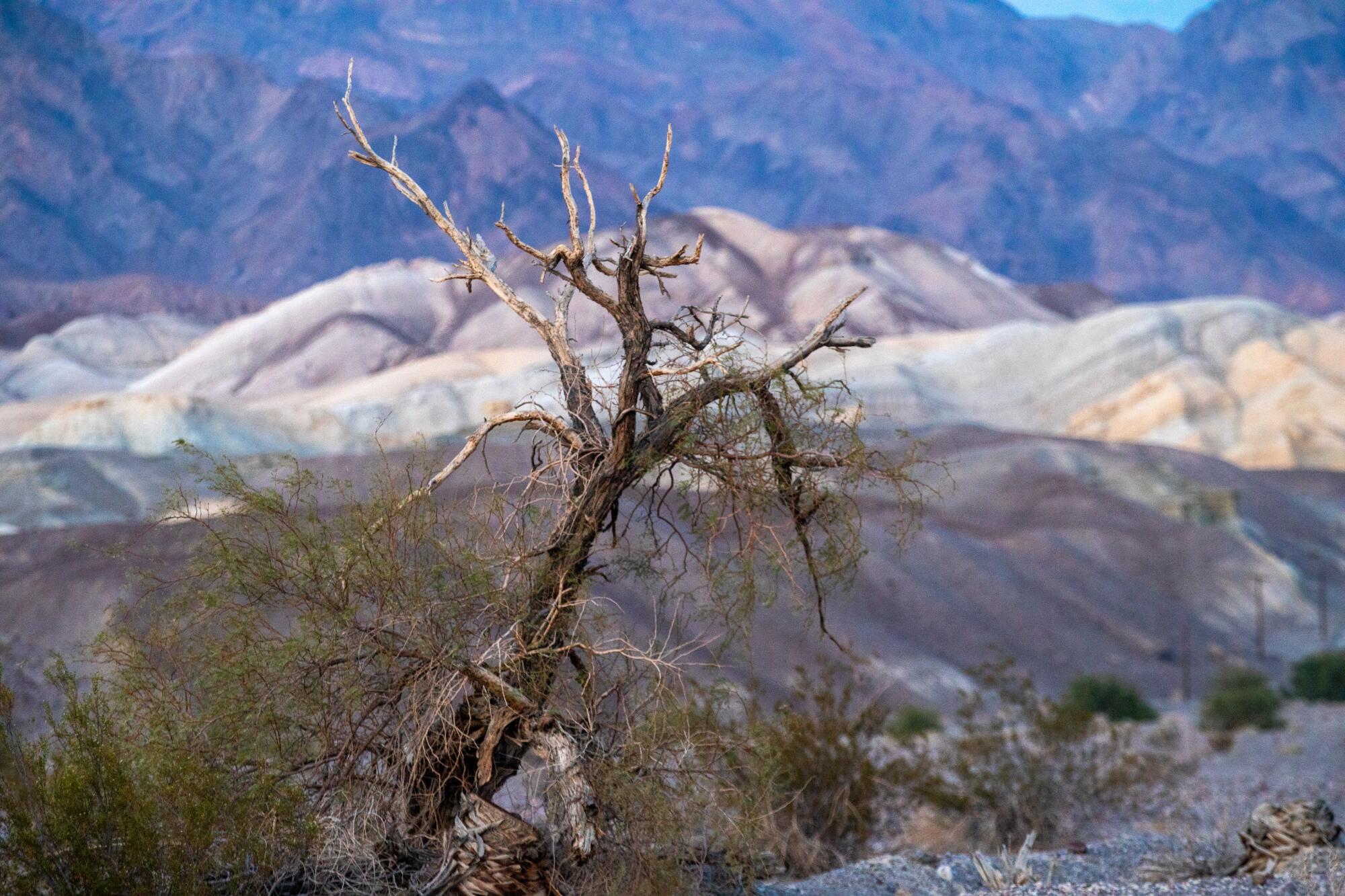
Such heat isnât only affecting birds and trees and humans. The critically endangered Devils Hole pupfish can withstand the parkâs very warm, very salty water, âbut if it were to get any hotter, that could definitely impact their reproductive cycles and lead to a decrease in the population,â Ponce said.
The recent flash floods triggered by record rainfall also âconfusedâ the fish, she added.
Death Valley, which typically receives less than 2 inches of rain per year, relies primarily on groundwater from natural springs to supply the smattering of hotels, golf courses and swimming pools designed for visitors.
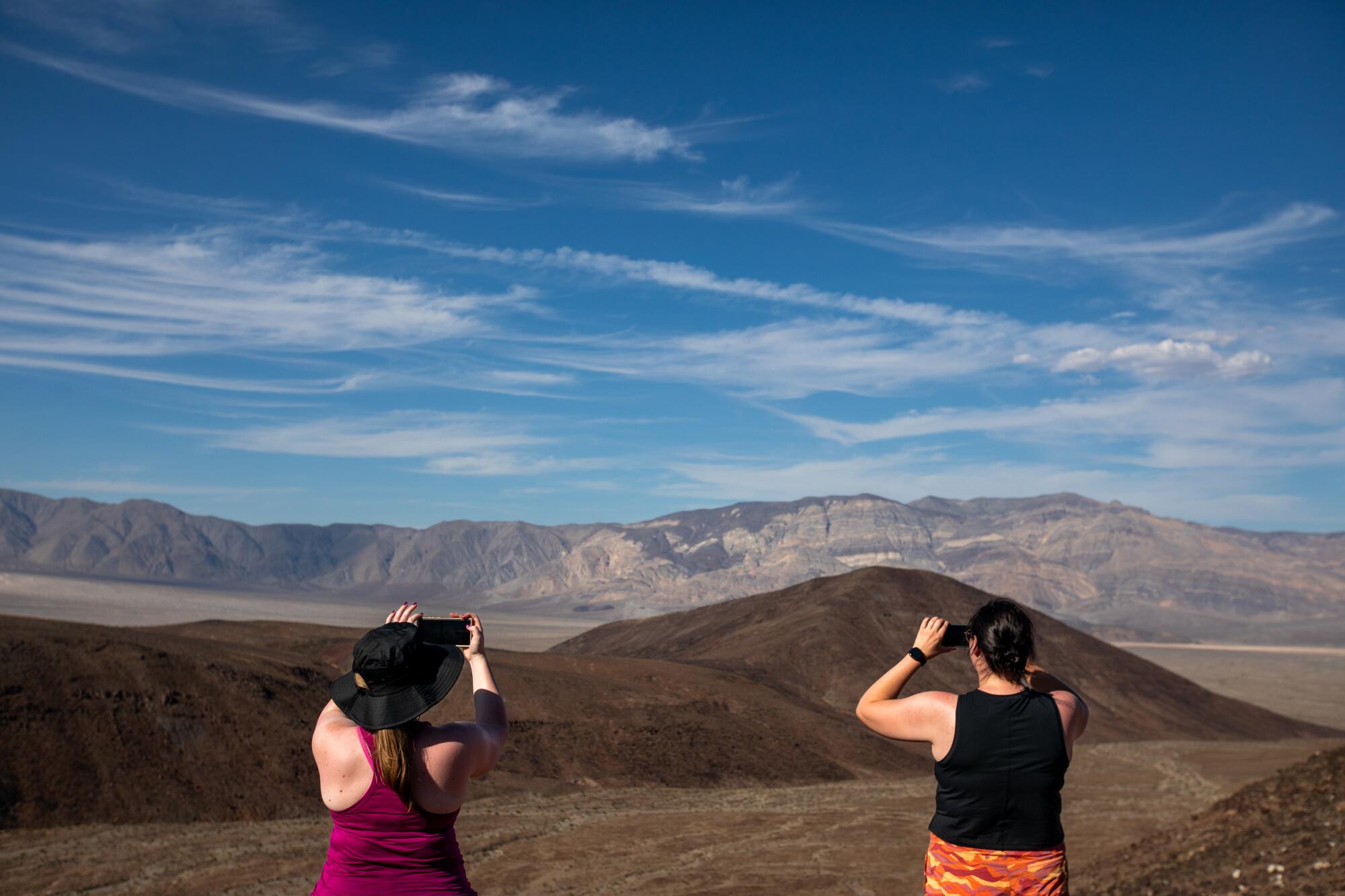
But even that supply has been threatened by worsening drought â particularly as development in surrounding areas leads to deeper wells and overpumping, park officials said.
Andler, the park ranger, noted that she tried to take advantage of a cooler spring this year to visit as many parts of the park as she could.
âIâd be like, âIâve got to get there,â because we may not have this much time to get to places later, because summers will probably be a little bit longer, and winters a little bit shorter,â she said.
The climate crisis has arrived in the American West. Letâs meet it head on.
Some of Death Valleyâs few longtime residents said those changes are beginning to feel more and more acute. One hotel worker, who asked not to be named because he was not authorized to speak with the press, said heâs lived here for about 10 years.
âThe longer Iâm here, the more this heat kicks my butt,â he said.
More to Read
Sign up for Essential California
The most important California stories and recommendations in your inbox every morning.
You may occasionally receive promotional content from the Los Angeles Times.
